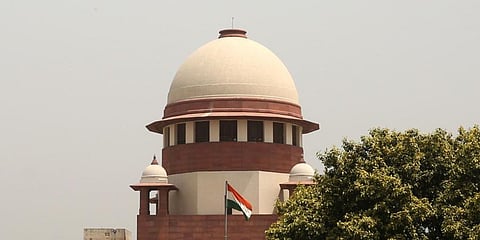

In the recently concluded Winter Session of Parliament, discussions were held on the High Court and Supreme Court Judges (Salaries and Conditions of Service) Bill 2021.
Several assertions were made by MPs in both the Houses regarding the functioning of our judicial system in general and the constitutional courts in particular. Most speeches called for the need to revisit the Third Judges Case (1998) that laid the basis to strike down the National Judicial Appointment Commission (NJAC) Bill in 2015.
The Bill was proposed by the government based on the ostensible argument that judges appointing themselves is not healthy for maintaining the independence of the judiciary.
Though the NJAC Bill was passed unanimously by the Parliament in 2014, the SC struck it down using its power of judicial review citing threat to its independence. This power of review is itself a judicial creation and not ordained either in the Constitution or prescribed by any legislative enactment.
Non-transparent recommendations of the collegium
Currently, appointments to HCs and SC are done through the collegium system that was introduced by the former Chief Justice of India P N Bhagwati in the Second Judges Case (1993). This does not find any backing in the Constitution, and India is the only country where judges appoint themselves and also decide on their transfers and promotions.
The involvement of other organs of the government such as the executive and the legislature in this process is more cosmetic than real. It is more in the nature of verification of the criminal and other such antecedents of the candidates recommended by the collegium than anything else.
There is no role for the governmental organs in the selection process itself. Many people, including several MPs, opined that hiring through the collegium system has turned out to be more about family pedigree, networking, bias, personal likes and dislikes rather than fair selection on merit.
The CPM MP from Kerala, John Brittas, cited several instances where candidates recommended by the collegium belonged to a lineage of judges. This cannot be overlooked as mere coincidence.
The most persuasive criticism of the collegium system is the lack of transparency in its recommendations. No one knows the criteria based on which the judges make their final choice and the data/ records relied upon to assess against such criteria, if any.
Disproportionate representation
The biggest fallout of the appointment process both pre and post the collegium system has been the disproportionate representation of various categories of people and the absence of gender parity as referred to in the speech of Brittas.
Over the years, a large percentage of our judges in the top court are Hindus, upper caste and male.
It is alleged that the magnitude of empathy, sensitivity, rationality, issues identification and ethical acumen for catering to India’s diverse population is something that the judiciary has lacked over the years even though our entire constitutional principle has been to uphold and nurture the diversity in our social fabric.
As Brittas mentioned in the House, out of 47 Chief Justices of India till date, at least 14 have been Brahmins. From 1950–1970, when the maximum strength of the SC was 14 judges, 11 of them were Brahmins. The number further increased to 18 during 1971–1989. In 1988, when there were 17 judges at the SC, nine of them were Brahmins, which accounts to more than 50% representation.
Another important observation to note here is that till 1980, there was no judge from the SC community in the apex court of the country. To date, the scheduled tribe community has found no representation in the Supreme Court. The population of SC and ST communities constitute about 16.6% and 8.6% of the country as per the last census of 2011.
Statistics also reveal that between mid-1985 and 2010, only four out of 127 Supreme Court judges have been women. Over the same period, three to four Supreme Court judges were from non-Hindu backgrounds.
To date, there have only been 11 female judges in the Supreme Court with only two of them having been elevated directly from the bar. India is yet to have a female Chief Justice. Figures from the lower judiciary show that 27.6% of judges are female while only around 10% of the High Court judges are women.
A similar lack of presence or under-representation exists in the categories of differently-abled, Christian, Buddhist or the LGBTQ community.
While following a completely representational system, like the recruitment to government posts, is neither desirable nor preferable in the appointment of judges of constitutional courts, there is a need for a setup that is completely meritocratic in practice.
Currently, the problem is that the collegium system itself doesn’t inspire confidence in the public about the selection of judges, which is supposed to be based on merit and merit alone. But while introducing meritocracy, the diversity in our country, which our Constitution strives to protect, must also get due consideration.
Adequate representation, inclusivity, merit and due process for selection are all key aspects in the making of a robust judiciary; this is something that the Indian judicial system needs to imbibe at the latest. This makes a strong case for the SC to revisit its 2015 judgement of striking down the NJAC.
A non-biased judicial commission with representations from outside the judiciary, including minorities, would not only make the whole selection process more transparent and streamlined but also act as a tool in reinstating the public’s, executive’s and legislature’s belief in the integrity and credibility of the system, all of which would augur well for reinforcing its independence.
Amar Patnaik
BJD Rajya Sabha MP, ex-CAG bureaucrat with a PhD in management and now an advocate
(Views are personal)
(amar_patnaik @yahoo.com)